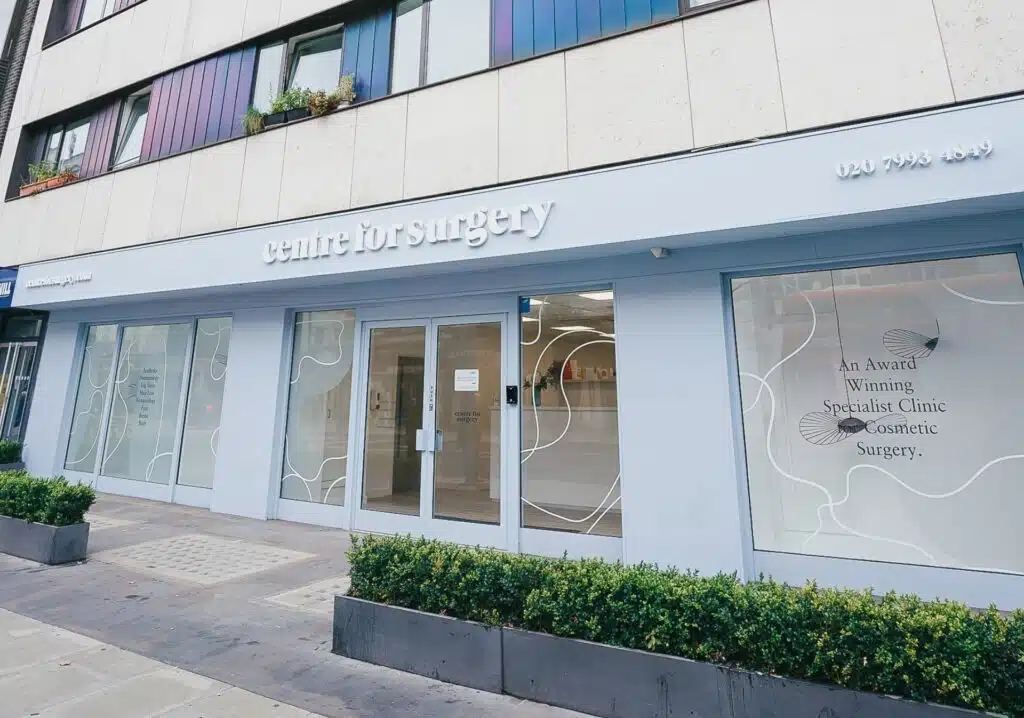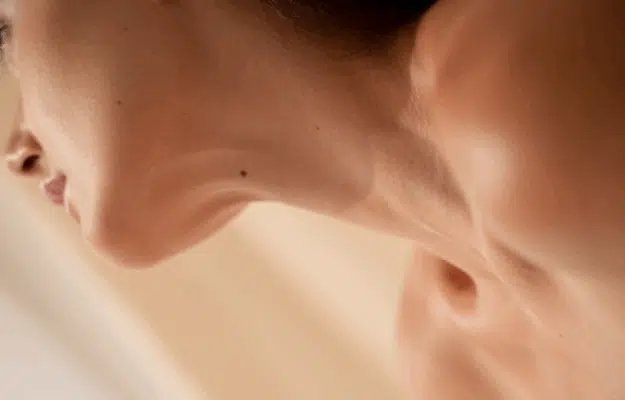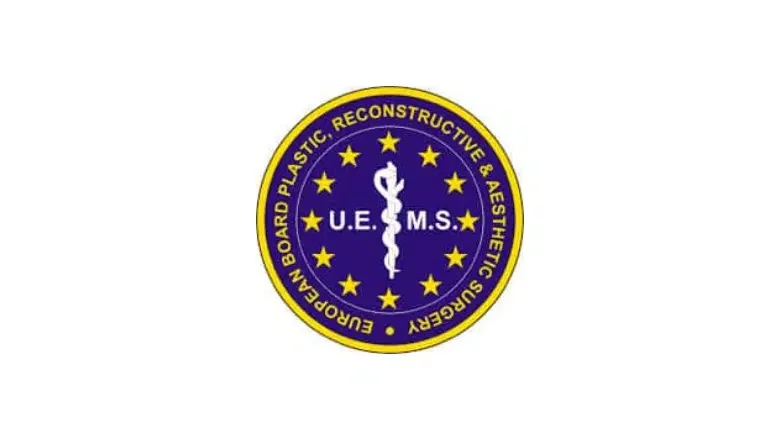Understanding the Right Type of Facelift to Combat Ageing Symptoms – Comparing SMAS and Deep Plane Facelifts
A facelift, known in more formal terms as a rhytidectomy, is a well-known facial revitalising procedure that’s getting a lot of attention these days in the UK. If you’re considering such a procedure, you’ll quickly realise there are various types of facelifts available. Each has unique pros and cons, and the decision largely depends on your expectations and needs. Two common types that often come up in discussion are the SMAS (Superficial Musculoaponeurotic System) Facelift and the deep plane facelift. Despite these techniques having a few things in common, they do vary in significant ways. So, you might find yourself wondering: Which is the best type of facelift for me?
Centre for Surgery, a specialist clinic in the heart of London, is a leading destination for those seeking professional facelift procedures. This clinic is equipped with experienced facelift surgeons who are at the top of their game.
In this detailed blog post, we’ll compare the SMAS and Deep Plane facelift procedures side-by-side. Our aim is to provide you with valuable insight and guidance that will assist you in determining the most suitable facelift technique for your specific circumstances!
RELATED: Different Types of Facelift And Neck Lift
What is a Facelift?
In simple terms, a facelift, or rhytidectomy, is a procedure designed to combat the signs of ageing. It lifts, tightens, and restores the youthful contours of the face, cheeks, and neck.
If you’re thinking about having a facelift, our skilled surgeons based in London are at your service, offering a wide array of both non-surgical and surgical methods. The best procedure for you will depend on what you’re hoping to achieve and the specifics of your current situation. Here’s a rundown of the options:
SMAS Facelift: The SMAS, or Superficial Musculoaponeurotic System Facelift, is designed to target sagging or drooping soft tissues throughout the face. It aims to reposition these tissues, improving the appearance of the cheeks, midface, and jawline.
Deep Plane Facelift: This type of facelift focuses on lifting and strengthening the muscles in your cheeks and at the base of your chin and neck. A deep plane facelift is perfect for correcting saggy cheeks, double chins, sagging necks, and skin that has lost its tightness.
Mid-Facelift: As the name suggests, a mid-facelift is focused on the middle section of your face, such as your cheeks. This technique aims to lift and tighten the cheeks, reduce any sagging, and lessen deep creases to enhance your overall facial definition.
Mini Facelift: A mini facelift could be the perfect solution for those showing minimal signs of facial ageing, particularly on the lower part of the face. A mini facelift doesn’t tighten the neck, unlike the SMAS and deep plane lifts.
Jawline Rejuvenation: This process reshapes and contours your jawline. It involves removing excess fatty tissues from your neck area through a procedure known as neck liposuction.
Liquid Facelift: A liquid facelift is a sought-after non-surgical alternative to traditional surgical facelifts. It involves the use of injectable fillers to refresh the face. This method boosts collagen production and helps to improve the elasticity of the skin.
Cheek Lift: Similar to the mid-facelift, a cheek lift focuses on reducing wrinkles or fine lines in the mid-face area, while also lifting the cheeks and enhancing the definition of your cheekbones.
At Centre for Surgery, our surgeons, who have undergone years of intensive training and gained extensive experience in the field of plastic surgery, have honed their skills across all these facelift techniques.
The SMAS facelift and deep plane facelift are among the most popular options. Although they may seem similar on the surface, each of these surgical approaches has its own unique set of benefits and potential outcomes.
What Sets SMAS and Deep Plane Facelift Apart?
It’s not uncommon for patients to get a bit muddled when distinguishing between the SMAS and deep plane facelift. They may seem similar on the surface, but in reality, these are two distinct types of facelifts. They each deliver different results, involve different techniques, and come with their recovery timelines and outcomes. So, how do these two compare and contrast?
Let’s delve into the details of the SMAS and deep plane facelifts to help you decide which type of facelift might be the better fit for you.
SMAS vs Deep Plane – Dissecting the Surgical Techniques
Both the SMAS and deep plane facelifts are performed while you’re under general anaesthesia, ensuring you’ll be asleep and comfortable throughout the procedure.
The principal difference between a SMAS facelift and a deep plane lift lies in how the procedure is carried out. During a SMAS facelift, the SMAS tissue layer and the skin are lifted separately. In contrast, the skin, muscles, and SMAS are all elevated together in a deep plane lift.
This separate adjustment of your skin and SMAS during a SMAS facelift gives your surgeon greater control. It allows for the tightening of these two layers in different directions, contributing to a more refined and smooth appearance.
Another significant difference between these two types of facelifts is the depth at which they operate. In a deep plane technique, the surgeon goes beyond the SMAS layer and targets the deeper muscles. By releasing or tightening the muscles responsible for facial expression, stress on the skin can be reduced, smoothing out any irregularities. The deeper reach also allows for a more comprehensive lifting effect.
Simply put, the SMAS facelift is a less invasive procedure and offers a more superficial lift than a deep plane lift. Nonetheless, both procedures are capable of delivering excellent results.
SMAS vs Deep Plane – Who’s the Perfect Candidate?
Both the SMAS and deep plane facelifts aim to tighten your facial and neck skin, resulting in improved contours.
The SMAS facelift has an advantage in terms of customisation, offering more flexibility to meet your specific needs compared to the deep plane lift. It’s often the preferred choice for patients wanting to tackle the early signs of ageing, such as jowls or sagging in the cheeks. With its ability to customise the approach, it can more effectively target specific problem areas.
On the other hand, a deep plane facelift might be more suitable for older patients who wish to address prominent lines, creases, and folds, or deal with significant skin laxity in the jaw and neck region. If you’re aiming for a considerable rejuvenation of your face and a more dramatic improvement in your overall facial appearance, then a deep plane facelift might be the ideal choice for you.
Both of these techniques serve as excellent procedures for enhancing your cheek and facial volume without resorting to fillers or implants.
SMAS vs Deep Plane – Which Offers More Lasting Results?
When it comes to durability, a deep plane facelift tends to outlast traditional facelifts such as the SMAS facelift. This is because it targets the deeper tissues and muscles. Although it is more invasive, the comprehensive technique used in deep plane facelifts enables our surgeons to deliver results that are not only effective but also have a long-lasting impact.
The results of a deep plane facelift can last anywhere from 10 to 15 years, often even longer.
On the flip side, a SMAS facelift, while being less invasive and more superficial, can still produce results that last up to 10 years or even more. So, it’s not short-term by any means.
However, it’s important to note that no matter the type of facelift chosen, the effects will eventually begin to fade due to factors like ageing, exposure to the sun, and gravity. So, you might consider a second facelift a decade or more down the line.
SMAS vs Deep Plane – What’s the Recovery Period Like?
For both SMAS and deep plane facelifts, the initial recovery period typically lasts up to about 3 weeks. Interestingly, SMAS facelifts tend to have a slightly longer recovery time compared to deep plane lifts. This is because the lifting is done in separate layers during a SMAS facelift.
In both cases, it’s quite normal to experience certain symptoms during your recovery period. These might include bruising, swelling, redness, and discomfort in the face. But don’t worry, these common side effects will gradually subside over time.
To aid your recovery, we’ll provide you with a compression garment and neck support to wear for 1 to 2 weeks following your facelift.
As for your daily routine, we would recommend you avoid any strenuous activities and hair treatments until at least six weeks after your facelift surgery.
RELATED: Facelift Scars: What to Expect after Surgery
SMAS vs Deep Plane – What’s the Cost & Prices in London?
Generally, the SMAS facelift is often more budget-friendly than the deep plane facelift. This is because the SMAS procedure is less invasive, usually requiring less time and effort to carry out, and thus it can come at a lower price tag than a deep plane lift.
That said, several variables must be taken into account when figuring out the cost of your facelift procedure. These could include the surgeon’s fee, the anaesthesia fee, the facility fee, and the cost of any additional surgical procedures you may wish to have done simultaneously (like fillers, liposuction, or facial implants).
Therefore, once you come in for a consultation and have a chat about your aesthetic goals with one of our specialist surgeons, your dedicated patient coordinator will be able to provide you with a quote for how much your SMAS or deep plane facelift might cost.
If you’d like to know more about the prices for Facelifts, feel free to give us a call on 0207 993 4849 for a price estimate.
Should I Opt for SMAS or Deep Plane?
Choosing between a deep plane facelift and a SMAS facelift boils down to your personal needs and objectives.
The SMAS facelift could be the perfect choice if you’re dealing with moderate signs of ageing and want to achieve the most natural-looking lift possible. It’s generally a less invasive technique that yields impressive results comparable to a deep plane lift.
On the other hand, a deep plane facelift could be the better option if you’re after a more dramatic transformation that alters both your skin and facial muscles. It’s the ideal choice if you’re grappling with very significant signs of ageing and are seeking intense improvements. Additionally, it’s the preferable option if you’re hoping for results that will stand the test of time.
The decision as to which facelift surgery will best help you reach your desired outcome depends on various conditions and factors. At Centre for Surgery, our proficiency in facial surgery enables us to pinpoint the most suitable type of facelift for you.
FAQs – Questions about SMAS vs Deep Plane
When is the best age to have a facelift?
Signs of ageing typically become apparent in your 40s. You may notice sagging cheeks, wrinkles, hollow under-eye areas, and deep lines. The effectiveness of different types of facelifts can vary with age. We usually recommend a SMAS facelift for patients in their middle ages, whereas a deep plane lift might be more suitable for older patients.
What does SMAS mean in plastic surgery?
SMAS is an acronym for Superficial Muscular Aponeurotic System. It’s a thin layer composed of collagen, elastic fibres, and fatty tissue in the face’s middle and lower sections. During a SMAS facelift, the surgeon can elevate your skin and reposition the SMAS tissue underneath to achieve a smoother, firmer skin appearance.
How does a SMAS facelift work?
The SMAS facelift operates by first lifting and drawing up your skin, followed by repositioning the underlying SMAS tissue throughout your cheeks, the middle area of your face, and your jawline.
Is a deep plane facelift painful?
Our team of surgeons will carry out your deep plane facelift under general anaesthesia, ensuring that you’ll be asleep throughout the procedure and won’t feel any discomfort. This approach results in less trauma to the facial tissue, leading to faster healing and recovery times.
Does recovery from a deep plane facelift take longer?
Recovery after a deep plane facelift operation can last up to 3 weeks. You should be able to return to your routine after about two weeks. Depending on your individual circumstances, other facelift techniques might require a lengthier recovery period.
How much does a SMAS facelift cost?
The price of a SMAS facelift in London is generally less than that of a deep plane facelift. The exact cost will depend on factors such as the extent of surgical correction and other aspects that need to be considered. For an estimate, you can reach out to our team today.
How much does a deep plane facelift cost?
In most cases, a deep plane facelift is pricier than the SMAS facelift as it targets deeper layers of tissue. However, numerous factors contribute to the final cost. You can get an estimate by contacting our clinic or a precise quote following a consultation at our Baker Street clinic.
Which is better, SMAS or deep plane?
Choosing between a SMAS and a deep plane facelift is entirely dependent on your personal goals. Both procedures have their merits and yield different results. You can use this article as a guide to help you determine whether a SMAS facelift or a deep plane facelift is the right plastic surgery procedure for you.
Why choose Centre for Surgery for facelift surgery?
Choosing Centre for Surgery for your facelift procedure is an excellent decision for several reasons:
- Highly Skilled Surgeons: At the Centre for Surgery, our team of surgeons are renowned for their extensive training, skills, and expertise in facial surgery. They have dedicated many years to honing their craft and have successfully performed numerous facelift procedures.
- Personalised Approach: We recognise that every individual is unique, and therefore, your treatment should be unique as well. We provide a bespoke approach to each patient, creating a personalised treatment plan based on your individual needs and aesthetic goals.
- Advanced Techniques: We pride ourselves on employing the most innovative and cutting-edge surgical techniques in the field. Our use of modern technology ensures that we achieve the best possible outcomes with minimal discomfort and recovery time for our patients.
- Holistic Care: We believe in providing comprehensive care from the moment you step into our clinic. This includes pre-surgery consultation, attentive care throughout your procedure, and thorough follow-up care to ensure your recovery process is going smoothly.
- Excellent Patient Satisfaction: Our top priority is patient satisfaction. We’re proud of the trust that our patients place in us and strive to uphold our strong reputation. We have countless positive reviews and testimonials from previous patients who were pleased with their results.
- Safety and Accreditation: The Centre for Surgery is an accredited facility that prioritises patient safety above all else. We strictly adhere to all healthcare regulations and standards, providing a clean and safe procedure environment.
Choosing Centre for Surgery for your facelift procedure is choosing quality, safety, and results you can trust. Whether you’re considering a SMAS or deep plane facelift, we’re here to guide you every step of the way and ensure your experience is as comfortable and rewarding as possible.










